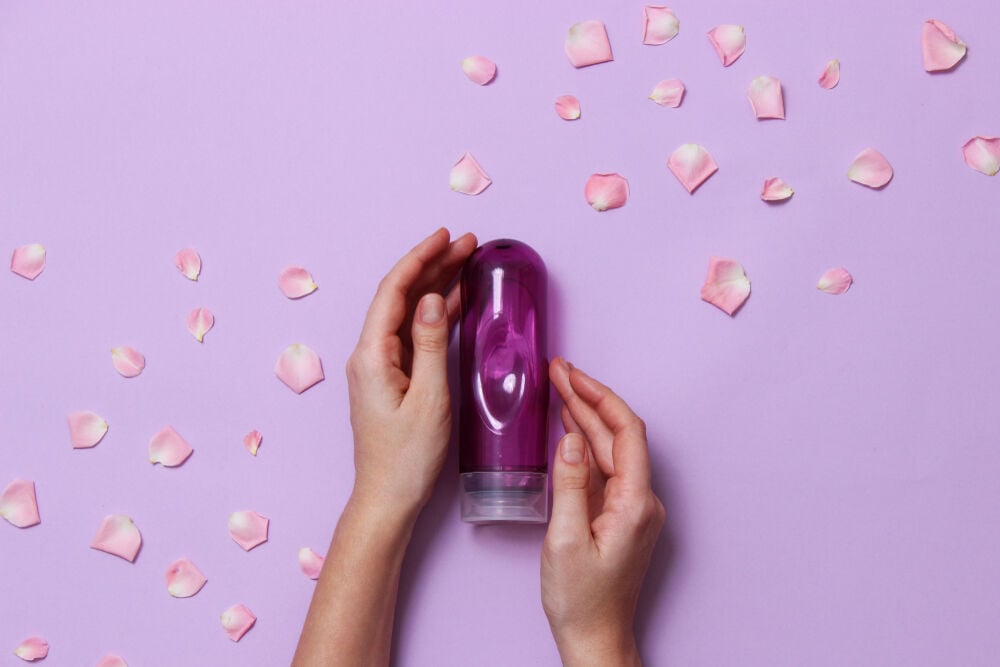More and more people are comfortable using a variety of contraception methods. From intrauterine devices (IUD’s) to patches to dental dams, plenty of us are looking beyond condoms and the pills. Curious about incorporating spermicides into your sexual health strategy? Read on for all the information you need to make a smart decision.
-
Tracking cycle
-
Getting pregnant
-
Pregnancy
-
Help Center
-
Flo for Partners
-
Anonymous Mode
-
Flo app reviews
-
Flo Premium New
-
Secret Chats New
-
Symptom Checker New
-
Your cycle
-
Health 360°
-
Getting pregnant
-
Pregnancy
-
Being a mom
-
LGBTQ+
-
Quizzes
-
Ovulation calculator
-
hCG calculator
-
Pregnancy test calculator
-
Menstrual cycle calculator
-
Period calculator
-
Implantation calculator
-
Pregnancy weeks to months calculator
-
Pregnancy due date calculator
-
IVF and FET due date calculator
-
Due date calculator by ultrasound
-
Medical Affairs
-
Science & Research
-
Pass It On Project New
-
Privacy Portal
-
Press Center
-
Flo Accuracy
-
Careers
-
Contact Us
Spermicide: How Does It Work?


Every piece of content at Flo Health adheres to the highest editorial standards for language, style, and medical accuracy. To learn what we do to deliver the best health and lifestyle insights to you, check out our content review principles.
What is spermicide?
Here are a few quick facts you need to know as while deciding spermicide is right for you
- A vaginal spermicide is a form of birth control that prevents pregnancy by disrupting the cell membrane of the sperm. Spermicides contain a chemical that is toxic to sperm — usually either nonoxynol-9 or octoxynol-9. The chemical stops the sperm in its tracks and prevents it from fertilizing the woman's egg.
- Spermicides can be found in a wide variety of formulation — like gels, foams, and films.
- All types of spermicide are inserted in the vagina, near the cervix shortly before sexual intercourse.
- Spermicides are a low cost and widely available, and let you avoid the side effects associated with hormonal birth control.
How do vaginal spermicides work?
Spermicide works best as a second contraception method. On its own, spermicide is 70–75% effective in preventing pregnancy. But that jumps up to 95% when combined with something like a condom or diaphragm.
It's always safest to rely on at least two methods of birth control, since no single method offers 100% protection. Spermicide is a great second option — especially for people looking to avoid hormonal contraception, or if you’re anxious about pregnancy.
Certain kinds of spermicides require a 30-minute wait time to dissolve into the vagina and become effective. It’s important to read the instructions on your spermicide to see if that’s the case. In general spermicides should be placed in the vagina at least 30 minutes before intercourse to allow for dispersion throughout the vagina.
Many women have a sensitivity to spermicide that can result in reduced comfort and irritation during intercourse, as well as increased risk of STDs and Urinary Tract Infections. If you experience those side effects, spermicide may not be an ideal contraception strategy for you.
What types of spermicide are there?
There are several ways you can incorporate spermicide into your sexual health strategy, and they all have their own benefits and drawbacks.
Spermicidal lubricant

If you already use lubricant as a way to enhance sexual pleasure or comfort, vaginal lubricants can be an easy way to incorporate spermicide into your sexual health strategy.
Something to note: Many barrier contraceptives are marketed as containing a layer of spermicidal lubricant. While condoms and dental dams are a great way for preventing pregnancy and STI’s, spermicide doesn’t offer any additional protection when attached to them.
Spermicidal jelly
Cream and jelly spermicides are typically sold in tubes like toothpaste. Because spermicidal jelly is thicker than liquid or foam spermicide, it can often be difficult to ensure it has been applied to the entire vagina — leaving some parts of you unprotected. Some manufacturers provide an applicator to make the process easier.
Spermicide film
A spermicidal film is a thin translucent layer of spermicide that can be placed on the vagina and absorbed.
Many women find a film more comfortable than creams, foams or gels — which can be cold upon application.
But unlike those types of spermicides, films have to be applied 30 minutes before sexual intercourse or the spermicidal chemicals will not have been fully absorbed by the vagina. If sexual spontaneity is important to you, you may decide the film method doesn’t work.
You also have to be careful with when handling spermicidal film: store it in a cool dry place and make sure your hands are completely dry while applying it — otherwise the film might dissolve before you get a chance to use it.
Spermicide foam
This type of spermicide comes in a pressurized can — like shaving cream. Foam is convenient, but it can be pretty hard to judge how much is left in the can. If you go with foam, think about buying a few cans at a time so you can grab a replacement when you run out unexpectedly.
Other types
Spermicides are also available as tablets or suppositories. Like spermicidal films, tablets and suppositories should be inserted high into the vagina near the cervix approximately 30 minutes before intercourse so that they fully dissolve.
Take a quiz
Find out what you can do with our Health Assistant
What are the benefits of spermicide?
Spermicides are a low cost and widely available. You don’t need a prescription to get them and they are sold most drug stores, making them one of the most accessible contraception methods around. Spermicides also let you avoid a lot of the side effects associated with hormonal birth control.
Spermicides can also give the vagina some additional lubrication, offering increased comfort and sexual pleasure.
What are the side effects of spermicide?
Many people have a sensitivity to chemicals within spermicide, and that can result in reduced comfort or irritation during intercourse. This skin irritation can result in increased risk of STIs. Some women also experience recurring urinary tract infections due to irritation from nonoxynol-9 spermicide.
Because of these risks, if spermicide irritates your skin it may not be an ideal part of your sexual health strategy.
Films, suppositories and tablets should be placed in the vagina at least 30 minutes before sex. Spermicides also lose their effectiveness after an hour so reapplication might be required. This means spermicide requires more thought and leaves more room for error than methods like the pill or an IUD.
Spermicides shouldn’t be your main contraception method, but they’re a great ingredient in any contraception cocktail. Whether hormonal birth control isn’t an option for you or you’re especially anxious about unplanned pregnancy, spermicide is a convenient and easy way to offer another method of protection.


Hey, I'm Anique
I started using Flo app to track my period and ovulation because we wanted to have a baby.


The Flo app helped me learn about my body and spot ovulation signs during our conception journey.


I vividly
remember the day
that we switched
Flo into
Pregnancy Mode — it was
such a special
moment.
Real stories, real results
Learn how the Flo app became an amazing cheerleader for us on our conception journey.




